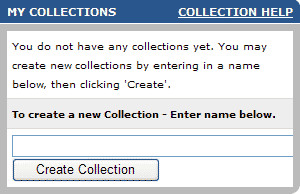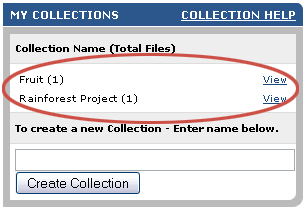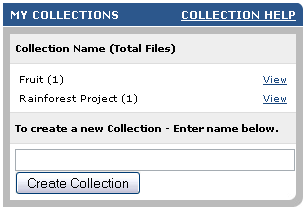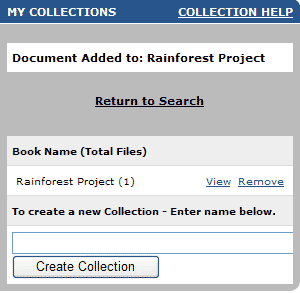What is the Repository?
The Repository is a versatile, easy-to-use online storage site where you can archive and share digital images, forms, documents, audio or video files, anything in digital form. In fact, any document that you can get onto your computer you can store and index in the Repository. The architecture is expandable and its overall storage capacity is virtually limitless. Imagine being able to make your most useful shelf of collections or collection of photographs or data available for reference by any other Extension worker or client. Then multiply that by all of your colleagues' most useful collectionshelves and collections. Finally, imagine being able to draw information from throughout this archive and assemble it easily into new, useful Extension materials and presentations. That is the Repository.
How to find files?
It's simple. To find a file -- which can be a digital document of any type* -- just go to your ANR Portal page (ucanr.edu/portal) and click the Repository link. You'll find the search tool on the right of the Repository's front page. Enter a search term, click the button, and then browse the results to find the files that fit your purpose best. Or for a list of all the files that have been uploaded into a particular category (say, "Food Safety"), just click the View All Collections link and scroll down the list until you see the Collection you want. Click that name and you will see a complete list of files in that Collection; then click a title to view that particular file.
Some documents are marked as peer-reviewed or Repository-reviewed (these two types are available for public access), but everything in the Repository, reviewed or not, has been put there by your ANR colleages. An ANR user can also take a group of thematically similar files and cluster them into an online "collection." That allows you to direct a colleague to a single URL where you have gathered all of the relevant files on a particular topic. You can even give colleagues permission to collaborate on the collection by adding materials their own.
* Allowable files include photographs, PowerPoint presentations, Acrobat PDF documents, audio and video files, white papers, forms, and any number of other types. Executable files (such as .exe, .com, .bat) are not allowed.
How to add files?
To upload a file to the Repository, click the Add/Edit Documents button on the Repository's front page. Then enter a title for the new document, find the file on your computer, click the Upload button, and there it is.
Now you can add other information to help others find out about the file: an abstract or description, its creation date and authorship, collections you would like to include it in, and relevant keywords from the widely used National Agricultural Library Thesauraus (NALT) list.
You can also add the new file to an online collection at any time.
Who can use it?
The entire Repository is available to all ANR faculty and staff. If you have an Internet connection and a ucanr.edu/portal Portal page, you have access to the Repository. Other approved users include ANR-sanctioned volunteer groups such as 4-H and the Master Gardeners. Additional users can be authorized by special request.
Members of the public can view peer-reviewed files -- such as online ANR publications -- as well as Repository-reviewed files.
Quick info:
How to access the ANR Repository:
- Click the link at your ANR Portal page (ucanr.edu/portal)
- Go straight to https://ucanr.edu/repository
- Use any Web search engine (for public access to peer-reviewed and Repository-reviewed files)
Groupings:
- Files are grouped by a number of overlapping systems, including
- Authorship
- Collections
- Libraries
- National Agricultural Library Thesauraus (NALT) search terms
What are "My Collections"?
In the Repository, a "collection" is a sort of a virtual loose-leaf binder where you can assemble any number of files from the Repository for easy retrieval and reference. Any ANR user can create a collection, and you can create as many collections as you want. You can keep the collection to yourself, share its contents with others, or even let colleagues collaborate on a collection by adding materials on their own.
How do I use collections in the Repository?
collections are used to organize documents that are already in the Repository. collections are just collections of files. You can use this for:
- Collection of frequently used forms for you and your office
- Quickly create a media kit
- Assemble documents you are using for a project for yourself and others
How do I create a collection?
You create a collection using the My Collections box on the right side of the Repository page. Enter a name for your collection and click the Start collection button. The collection's name will now appear in your My Collections box. .

Becomes

How do I add files to a collection?
Use the Search box (top right of any Repository page) to find content to add to your collection. Just enter a search term and click the Search button. If you think an item in the search results might be useful, click on it. That takes you to the Viewing Document page, where you can view the item in greater detail. If you think it fits one of your collections, just click the Add link next to that collection's name in the My Collections box. It's that easy.

After clicking the 'add' button, the system will add the document to the collection, and provide you with two forms of feedback. First, you will see a green bar telling you that a document has been added. The bar will quickly fade to white.
Second, you will see the number of documents in the collection listed next to the collection name.

Remove Content from a collection
![]() Remove Items or Delete a Collection
Remove Items or Delete a Collection
To remove a file from a collection, just click "Remove". Don't worry, this won't remove the file from the Repository, only from your collection. If you are the only owner and would like to delete your entire Collection, simply click "delete". Be very sure you want to do this, though. Once your collection has been deleted, it's gone. If you share the collection with another owner, you must first remove them as an owner. You will then be able to delete the collection. All owners have the same exact rights, and can remove each other from the collection, so if you decide to delete a collection you share with another owner, please remember to contact them first.
Collection View Page
Clicking 'View' next to any collection name will take you to the collection view page.
On that page you can:
- Edit the description at the top of the page
- Sort the documents within the collection
- Create a Zip file for the collection
- Add additional owners
Edit Description
At the top of the collection View page is the description. Underneath the description is a link to 'Edit Name and Description'. Clicking this will take you to a simple form to make changes. Click 'Save Name and Description' to finish the process. Only collection owners can do this.
Sort Your Collection
Click the 'Sort collection List' link. You will be presented with a list of all the documents in the collection with a number next to each document title. Change the numbers to sort the collections. Lowest numbers will go on the top of the list.
Click 'Resort List' at the bottom of the page to finish the process.
Create a Zip file for the collection.
After clicking the link, your Zip file will be created. Once it is done (usually under one minute) the background will temporarily turn green, and you will be provided with a link to Get the Zip File. Clicking that link will download all of your files together in one Zip document. You will need t o expand this document on your desktop.
One of the best uses of creating collections is to wrap up all the documents into one file for quick and easy download. Once you have the collection created, and populated with documents, click on the 'view' link to go to the view page. Under the number of items on the page, you will see a link to create a Zip file.


Add Additional Owners
Each collection can have an unlimited number of owners- but all owners must be in the ANR Directory.
To add additional owners, go to the collection view page. On the right hand side, in the collection bar, is an option to add additonal owners.
Select the new owner from the drop-down menu
Click 'add'
The new owner will be added. All owners have the same exact rights, and can delete each other.
Linking to a collection
You can give out a link to a collection just like any other link: via e-mail, on a website, in a brochure, etc.
Simply go to the view page and copy the URL (similar to: https://ucanr.edu/repository/collectionview.cfm?collection=75 )
The public will only see documents that have been made public by the submitter.
Developed by the Web Action Team at ANR Communication Services.
|
|